一、什么是Spring Security?
Spring Security是基于Spring的安全框架.它提供全面的安全性解决方案,同时在Web请求级别和调用级别确认和授权.在Spring Framework基础上,Spring Security充分利用了依赖注入(DI)和面向切面编程(AOP)功能,为应用系统提供声明式的安全访问控制功能,建晒了为企业安全控制编写大量重复代码的工作,是一个轻量级的安全框架,并且很好集成Spring MVC
二、Spring Security的核心功能有哪些?
1、认证(Authentication):指的是验证某个用户是否为系统中的合法主体,也就是说用户能否访问该系统。
2、授权(Authorization):指的是验证某个用户是否有权限执行某个操作
三、Spring Security基于哪些技术实现?
Filter,Servlet,AOP实现
众所周知想要对Web资源进行保护,最好的办法莫过于Filter,要想对方法调用进行保护,最好的办法莫过于AOP。所以SpringSecurity在我们进行用户认证以及授予权限的时候,通过各种各样的拦截器来控制权限的访问,从而实现安全。
Spring Security功能的实现主要是由一系列过滤器链相互配合完成。

1、springSecurityFilterChain中各个过滤器怎么创建的只需了解即可。不要太过关注。
2、重点记忆UsernamePasswordAuthenticationFilter,ExceptionTranslationFilter, FilterSecurityInterceptor这三个过滤器的作用及源码分析。
3、重点记忆认证中Authentication,AuthenticationManager,ProviderManager, AuthenticationProvider,UserDetailsService,UserDetails这些类的作用及源码分析。
4、重点记忆授权中FilterInvoction,SecurityMetadataSource,AccessDecisionManager的作用。
四、框架的核心组件
SecurityContextHolder:提供对SecurityContext的访问
SecurityContext:持有Authentication对象和其他可能需要的信息
AuthenticationManager:其中可以包含多个AuthenticationProvider
ProviderManager对象:为AuthenticationManager接口的实现类
AuthenticationProvider:主要用来进行认证操作的类 调用其中的authenticate()方法去进行认证操作
Authentication:Spring Security方式的认证主体
GrantedAuthority:对认证主题的应用层面的授权,含当前用户的权限信息,通常使用角色表示
UserDetails:构建Authentication对象必须的信息,可以自定义,可能需要访问DB得到
UserDetailsService:通过username构建UserDetails对象,通过loadUserByUsername根据userName获取UserDetail对象
五、SpringSecurity的工作流程
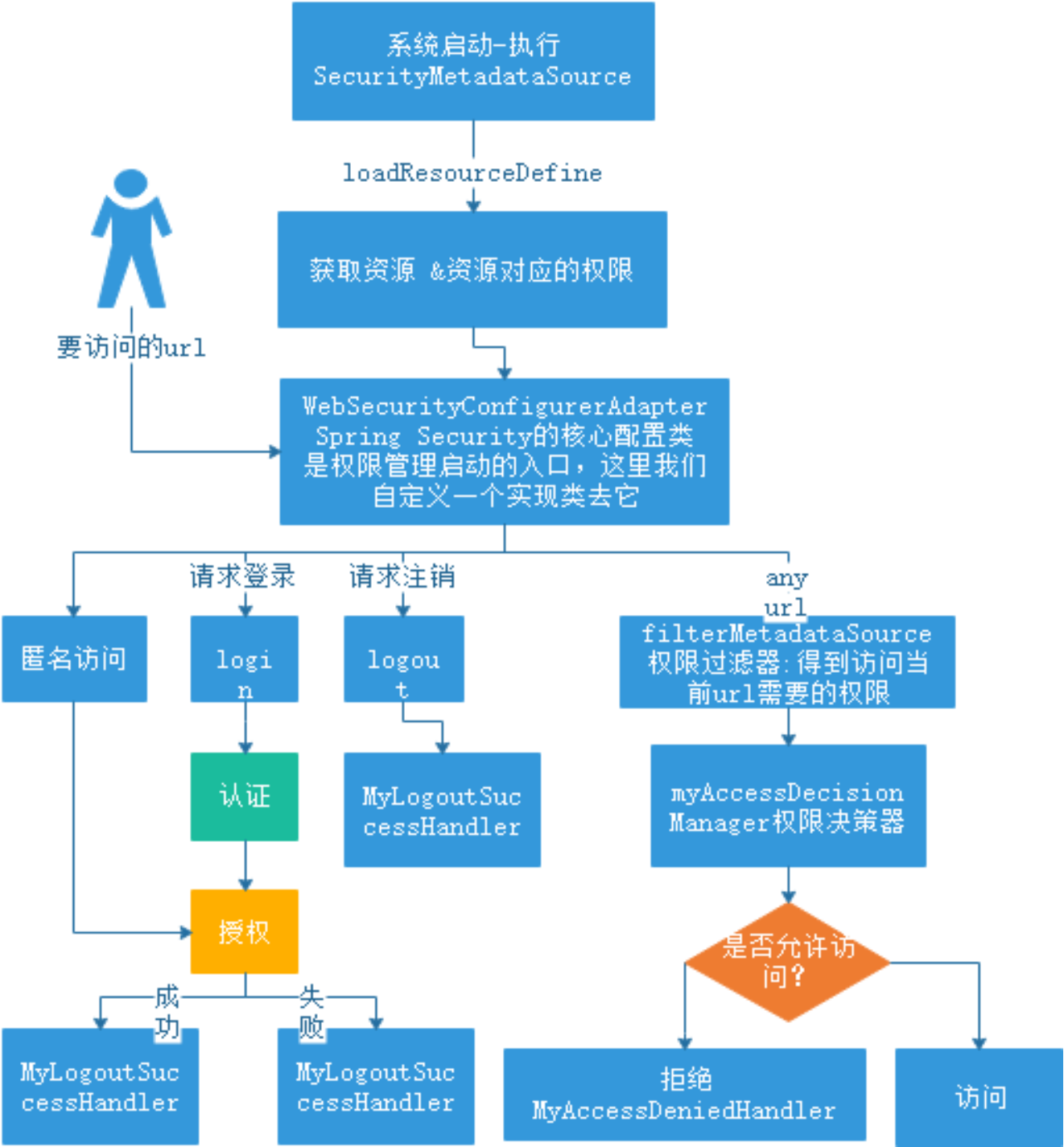
六、认证流程
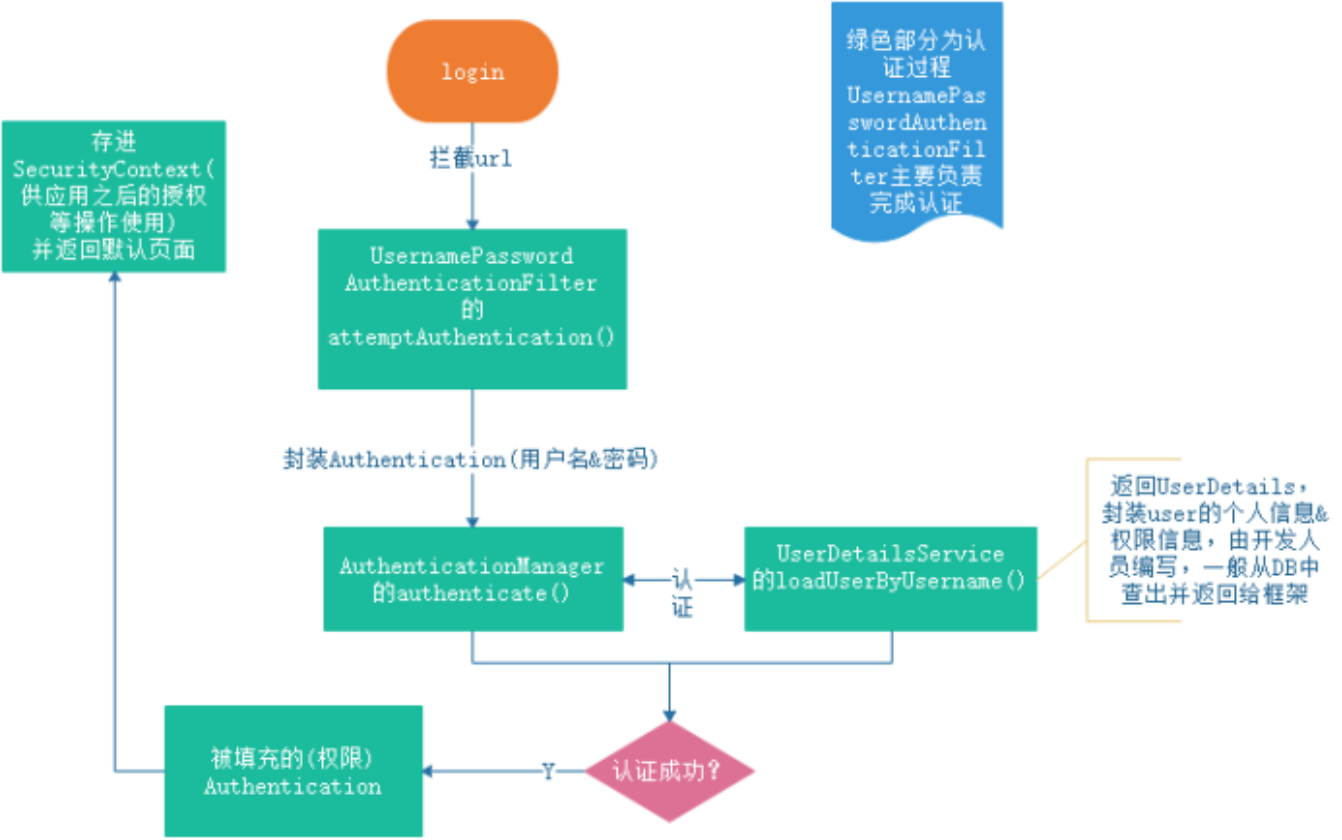
七、授权流程
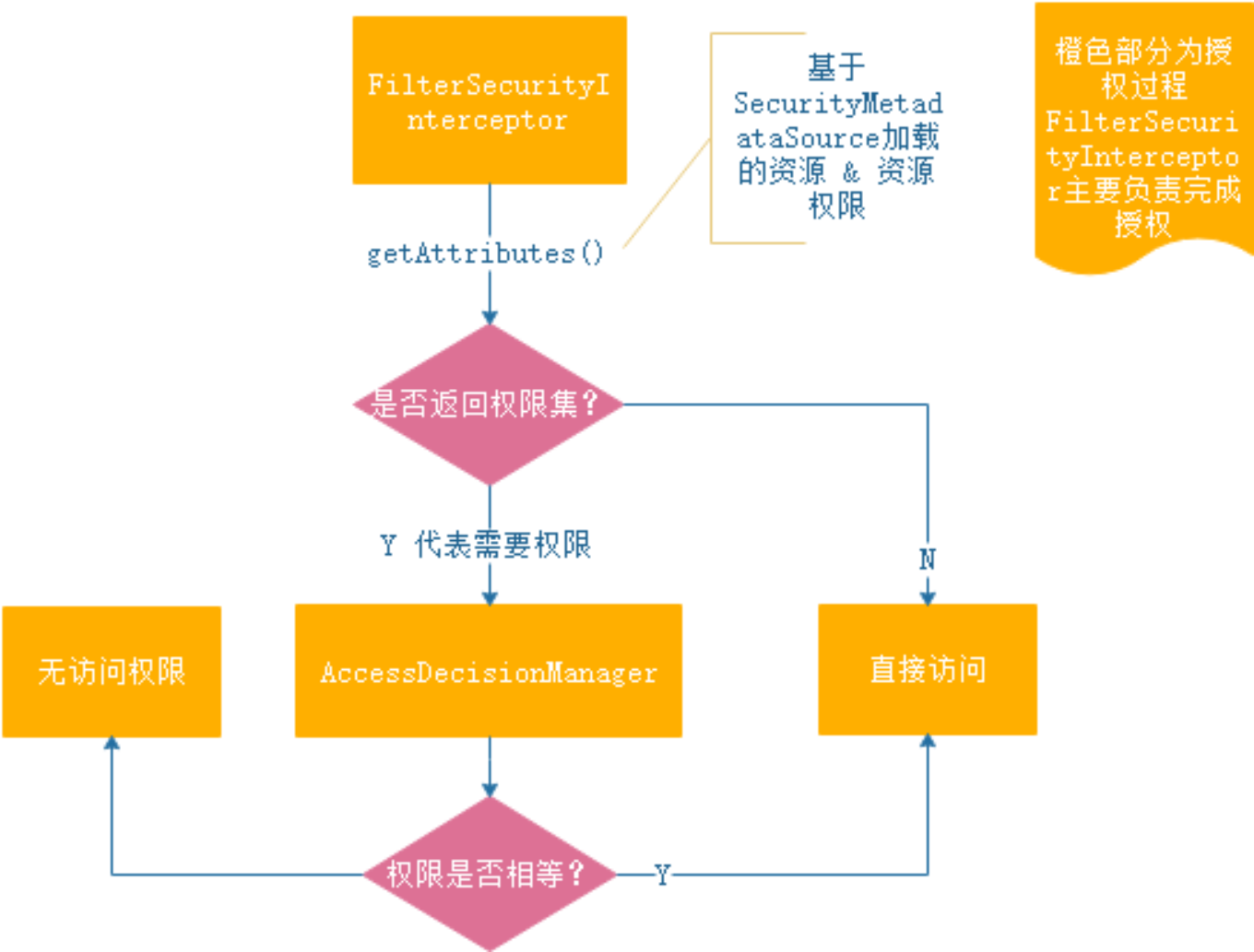
八、springsecurity入门示例
** 1、构建maven项目,引入springsecurity相关依赖。 **

pom.xml配置文件主要部分:
<properties>
<spring.version>4.2.0.RELEASE</spring.version>
</properties>
<dependencies>
<dependency>
<groupId>junit</groupId>
<artifactId>junit</artifactId>
<version>4.11</version>
<scope>test</scope>
</dependency>
<dependency>
<groupId>org.springframework</groupId>
<artifactId>spring-beans</artifactId>
<version>${spring.version}</version>
</dependency>
<dependency>
<groupId>org.springframework</groupId>
<artifactId>spring-context</artifactId>
<version>${spring.version}</version>
</dependency>
<dependency>
<groupId>org.springframework</groupId>
<artifactId>spring-webmvc</artifactId>
<version>${spring.version}</version>
</dependency>
<dependency>
<groupId>org.springframework.security</groupId>
<artifactId>spring-security-web</artifactId>
<version>${spring.version}</version>
</dependency>
<dependency>
<groupId>org.springframework.security</groupId>
<artifactId>spring-security-config</artifactId>
<version>${spring.version}</version>
</dependency>
<dependency>
<groupId>jstl</groupId>
<artifactId>jstl</artifactId>
<version>1.2</version>
</dependency>
</dependencies>
2、配置web.xml。
<context-param>
<param-name>contextConfigLocation</param-name>
<param-value>classpath:spring-security.xml</param-value>
</context-param>
<servlet>
<servlet-name>springmvc</servlet-name>
<servlet-class>org.springframework.web.servlet.DispatcherServlet</servlet-class>
<init-param>
<param-name>contextConfigLocation</param-name>
<param-value>classpath:spring-mvc.xml</param-value>
</init-param>
<load-on-startup>1</load-on-startup>
</servlet>
<servlet-mapping>
<servlet-name>springmvc</servlet-name>
<url-pattern>/</url-pattern>
</servlet-mapping>
<listener>
<listener-class>org.springframework.web.context.ContextLoaderListener</listener-class>
</listener>
<filter>
<filter-name>springSecurityFilterChain</filter-name>
<filter-class>org.springframework.web.filter.DelegatingFilterProxy</filter-class>
</filter>
<filter-mapping>
<filter-name>springSecurityFilterChain</filter-name>
<url-pattern>/*</url-pattern>
</filter-mapping>
<welcome-file-list>
<welcome-file>index.jsp</welcome-file>
</welcome-file-list>
3、书写AdminController.java类。
@Controller
public class AdminController {
@RequestMapping(value = {"/","/welcome**"},method = RequestMethod.GET)
public ModelAndView welcome(){
ModelAndView welcome = new ModelAndView();
welcome.addObject("title","Welcome");
welcome.addObject("message","This is a Security Page");
welcome.setViewName("hello");
return welcome;
}
@RequestMapping(value = {"/","/admin**"},method = RequestMethod.GET)
public ModelAndView admin(){
ModelAndView welcome = new ModelAndView();
welcome.addObject("title","admin");
welcome.addObject("message","This is Admin page");
welcome.setViewName("admin");
return welcome;
}
4、配置spring-mvc.xml
<context:component-scan base-package="web.*"/>
<bean class="org.springframework.web.servlet.view.InternalResourceViewResolver">
<property name="prefix" value="/WEB-INF/views/"/>
<property name="suffix" value=".jsp"/>
</bean>
5、配置spring-security.xml
<security:http auto-config="true">
<security:intercept-url pattern="/admin**" access="hasAnyRole('ROLE_USER')"/>
</security:http>
<security:authentication-manager>
<security:authentication-provider>
<security:user-service>
<security:user name="admin" authorities="ROLE_USER" password="123456"/>
</security:user-service>
</security:authentication-provider>
</security:authentication-manager>
注意:****
6、准备页面。
admin.jsp
<%@ page contentType="text/html;charset=UTF-8" language="java" isELIgnored="false" %>
<%@page session="true" %>
<%@taglib prefix="c" uri="http://java.sun.com/jsp/jstl/core" %>
<html>
<head>
<title>Title</title>
</head>
<body>
<h2>title:${title}</h2>
<h2>message:${message}</h2>
<c:if test="${pageContext.request.userPrincipal.name != null }">
<h2>welcome you ,${pageContext.request.userPrincipal.name}</h2>
<a href="<c:url value='/j_spring_security_logout'/>">Logout</a>
</c:if>
</body>
</html>
hello.jsp
<%@ page contentType="text/html;charset=UTF-8" language="java" isELIgnored="false" %>
<html>
<head>
<title>Title</title>
</head>
<body>
<h2>title:${title }</h2>
<h2>message:${message }</h2>
</body>
</html>
7、启动tomcat,访问项目http://localhost:8080/springsecurity/admin
初次访问http://localhost:8080/springsecurity/admin提示登录,这是springsecurity为我们提供的默认的登录页面
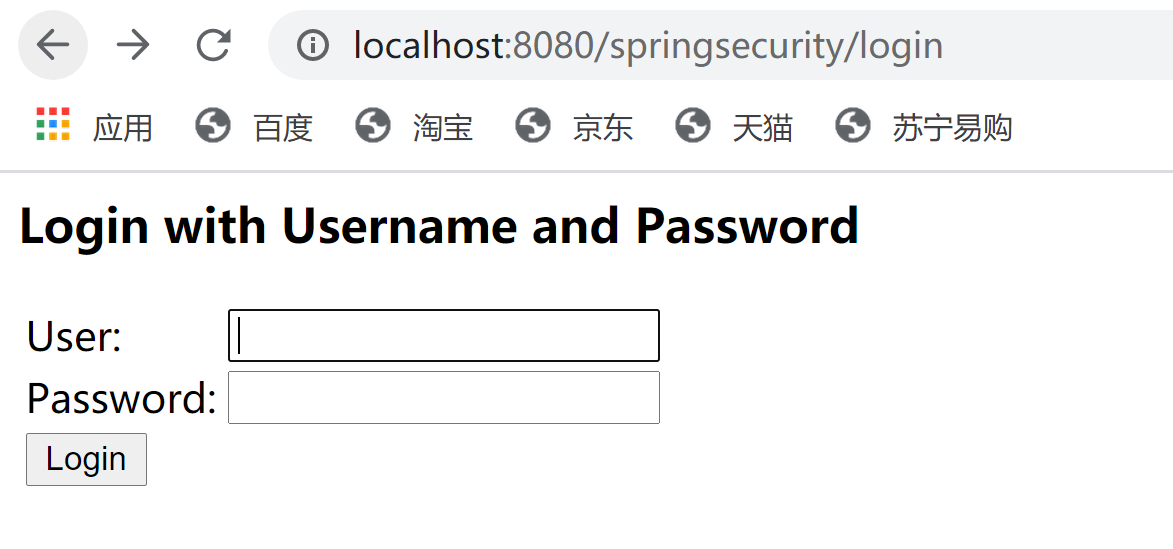
用户名或者密码错误,登录失败
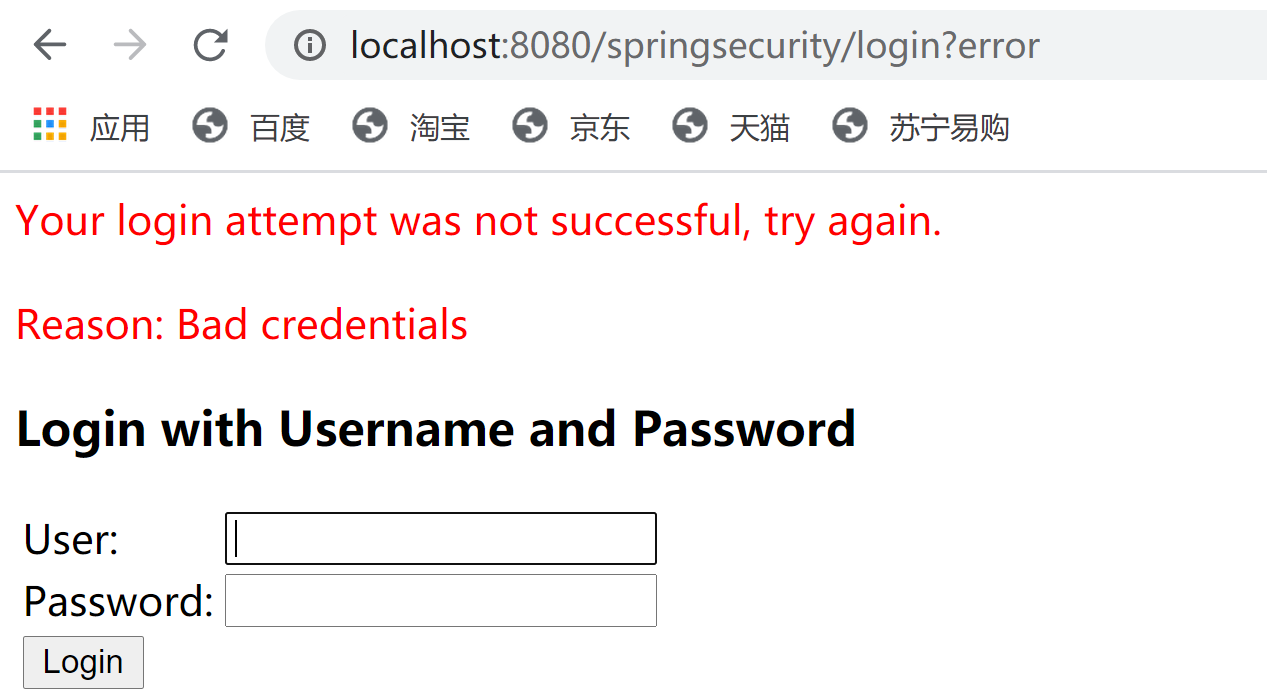
登录成功,跳转欢迎页面

https://www.cnblogs.com/ifme/p/12188982.html
https://blog.csdn.net/cxy35/article/details/105272078
